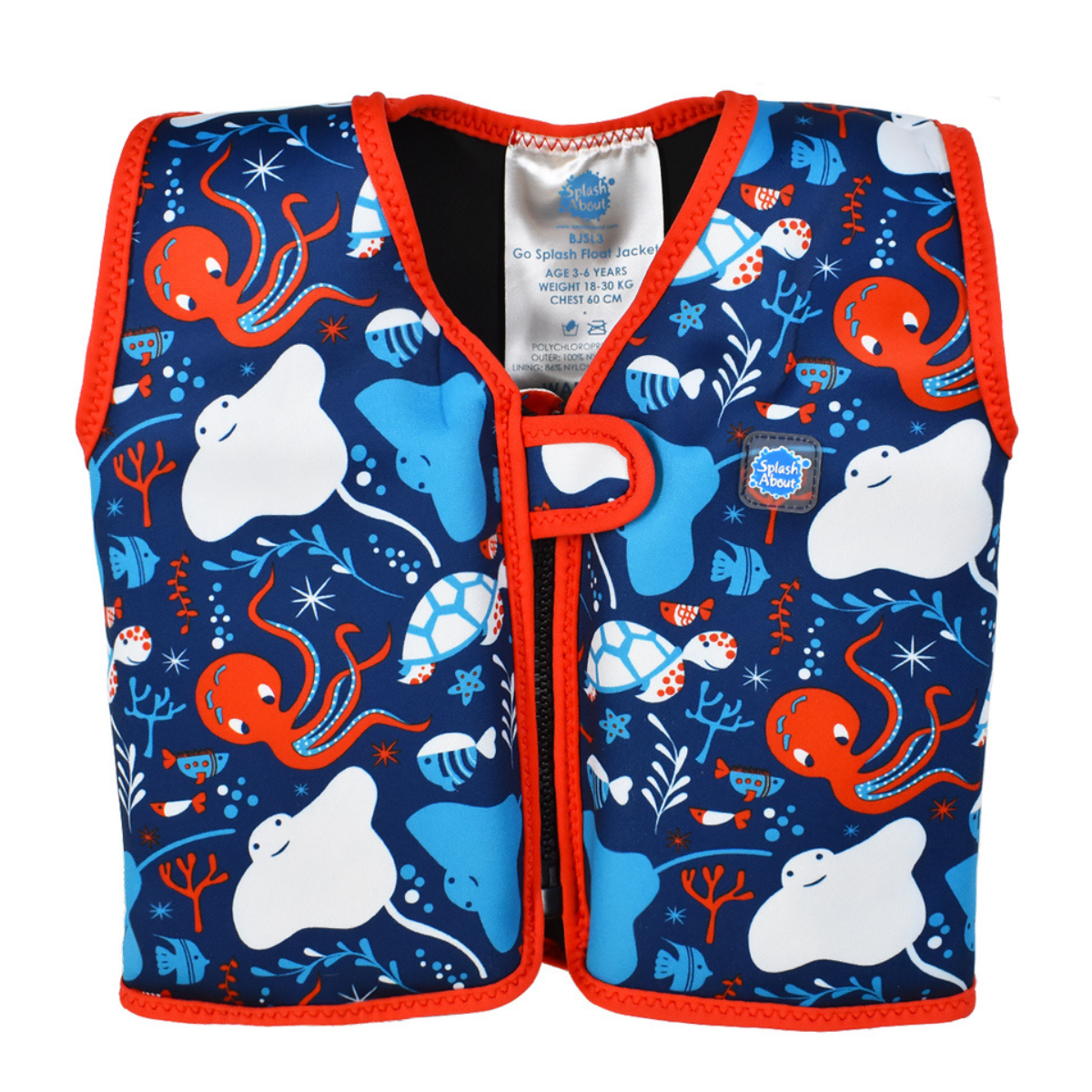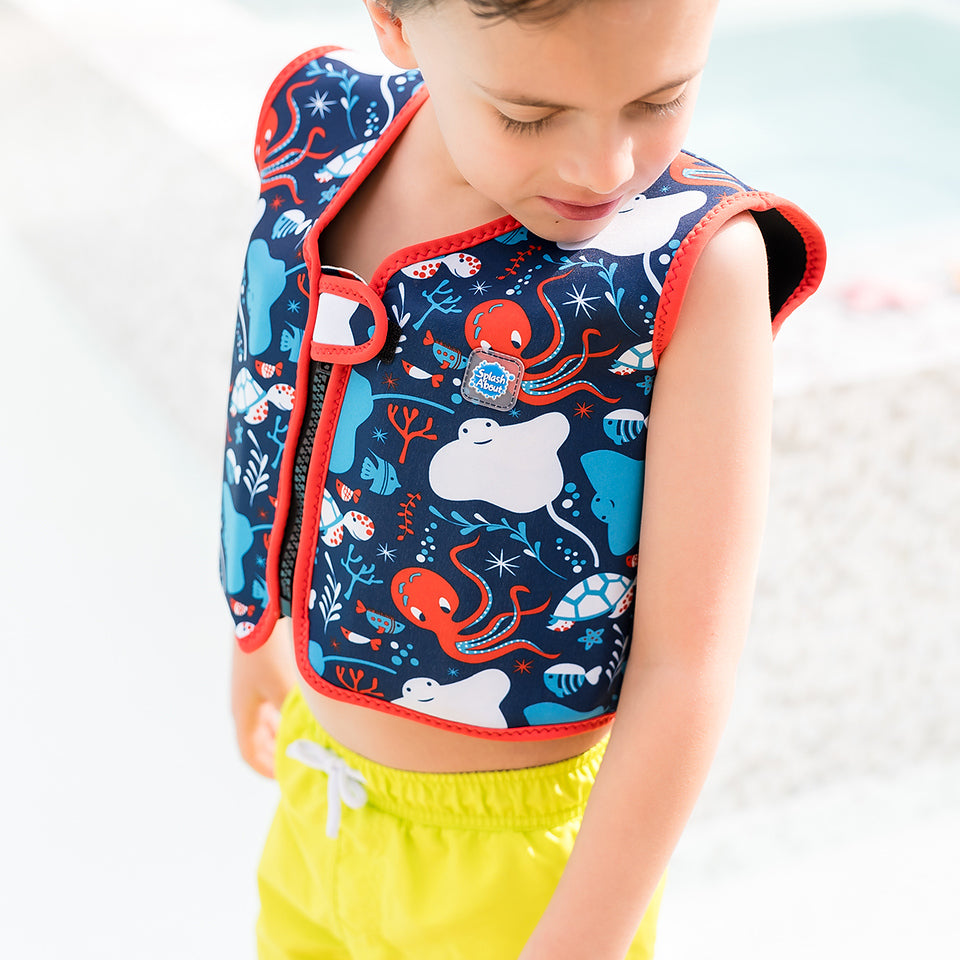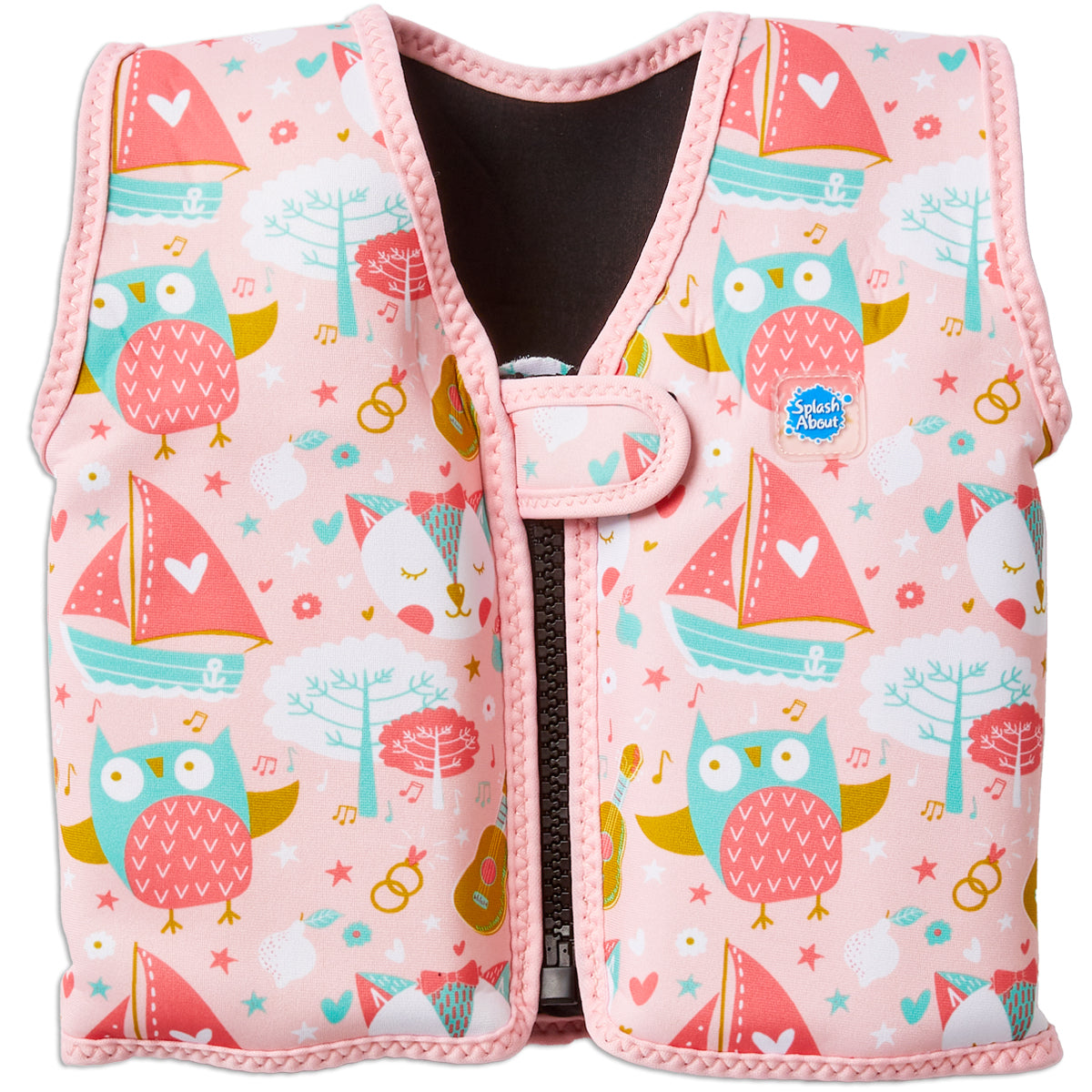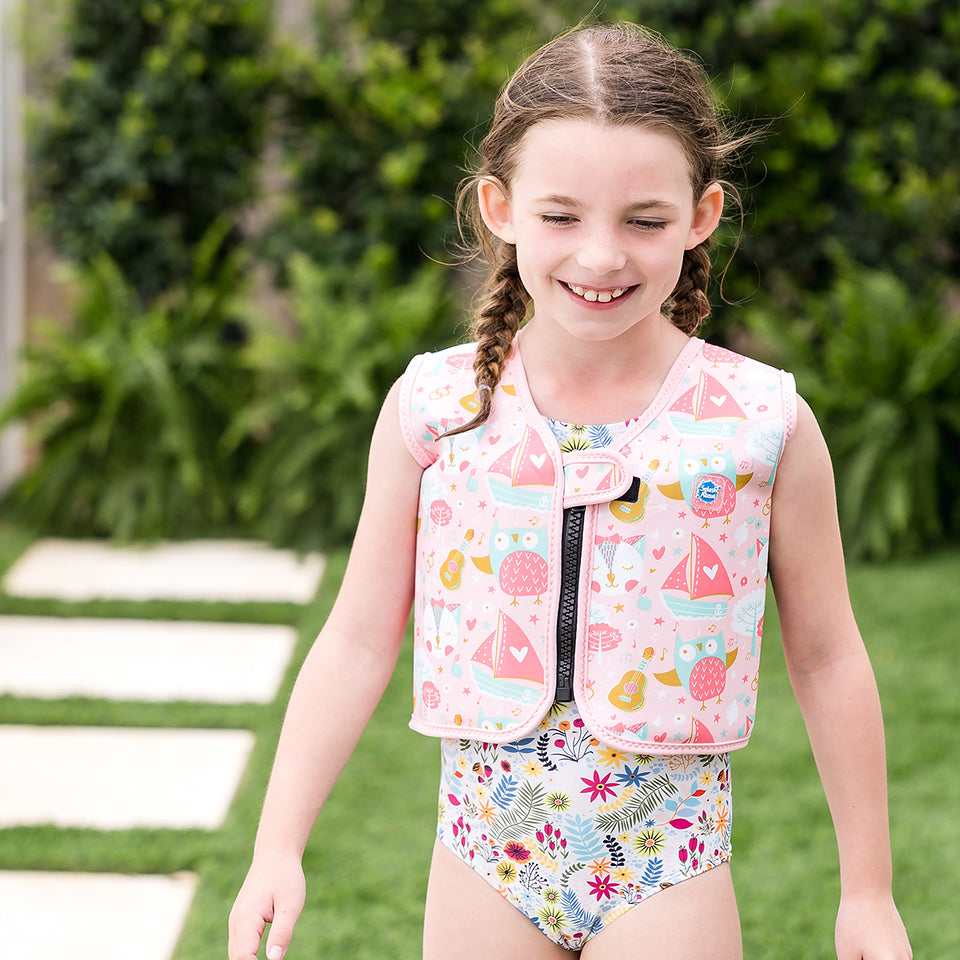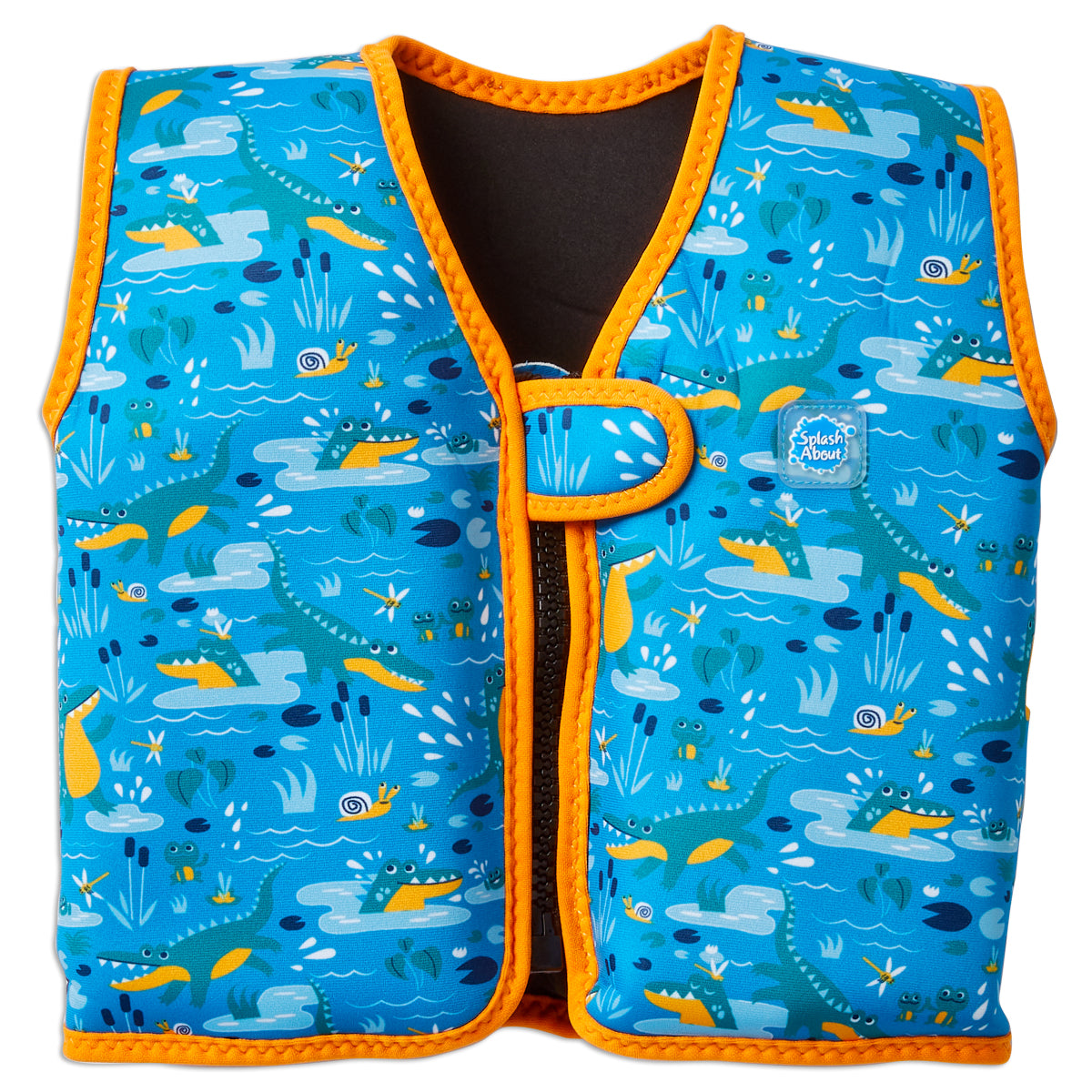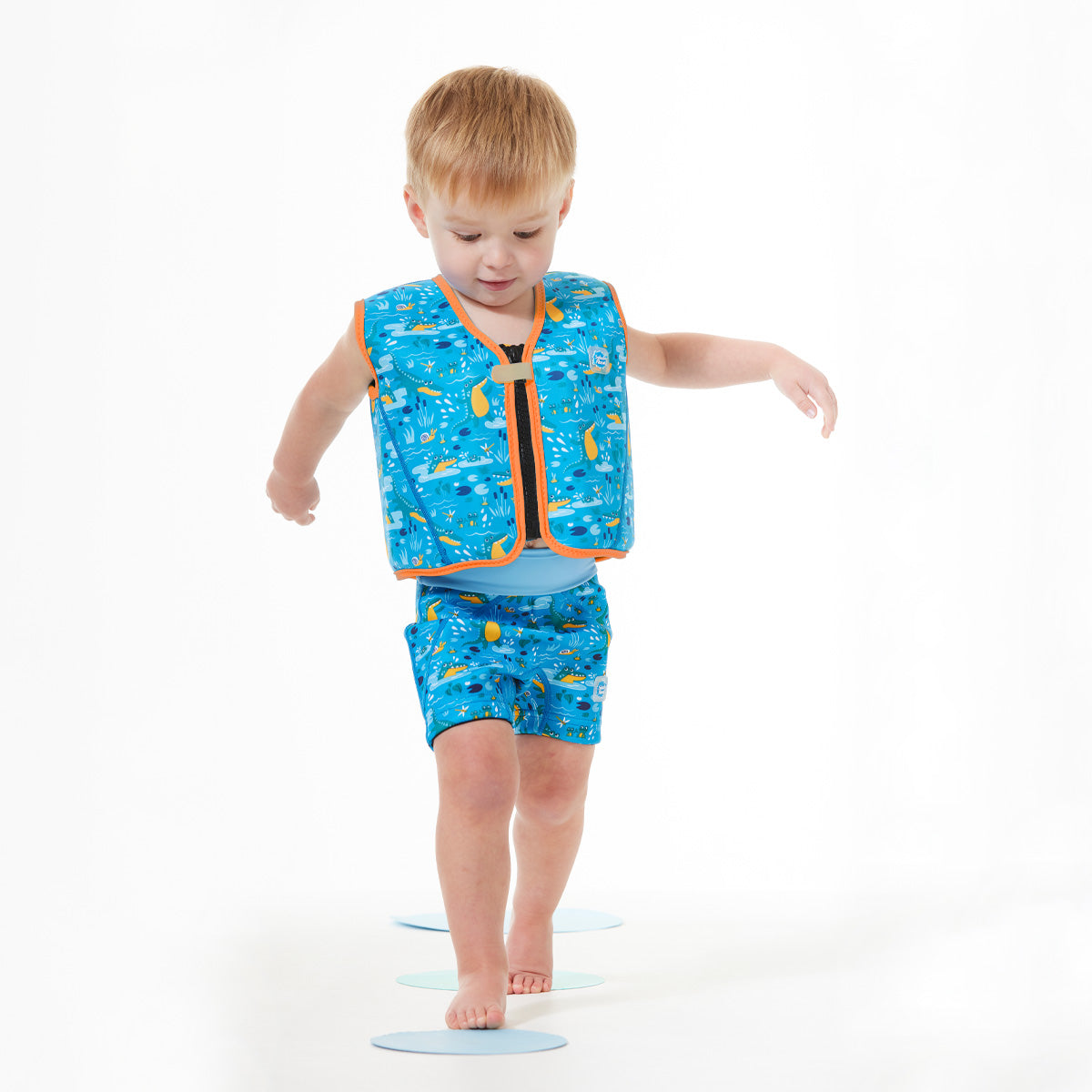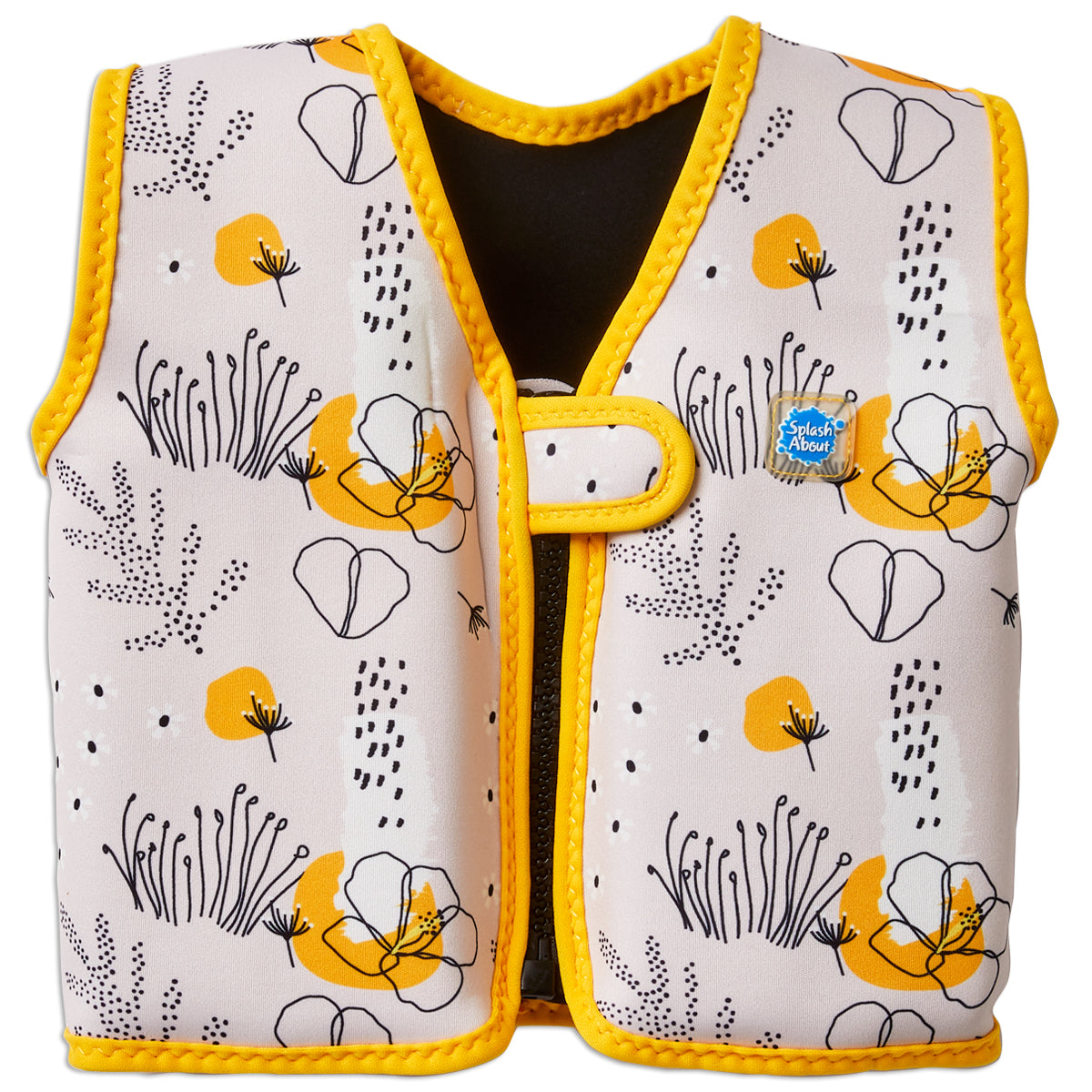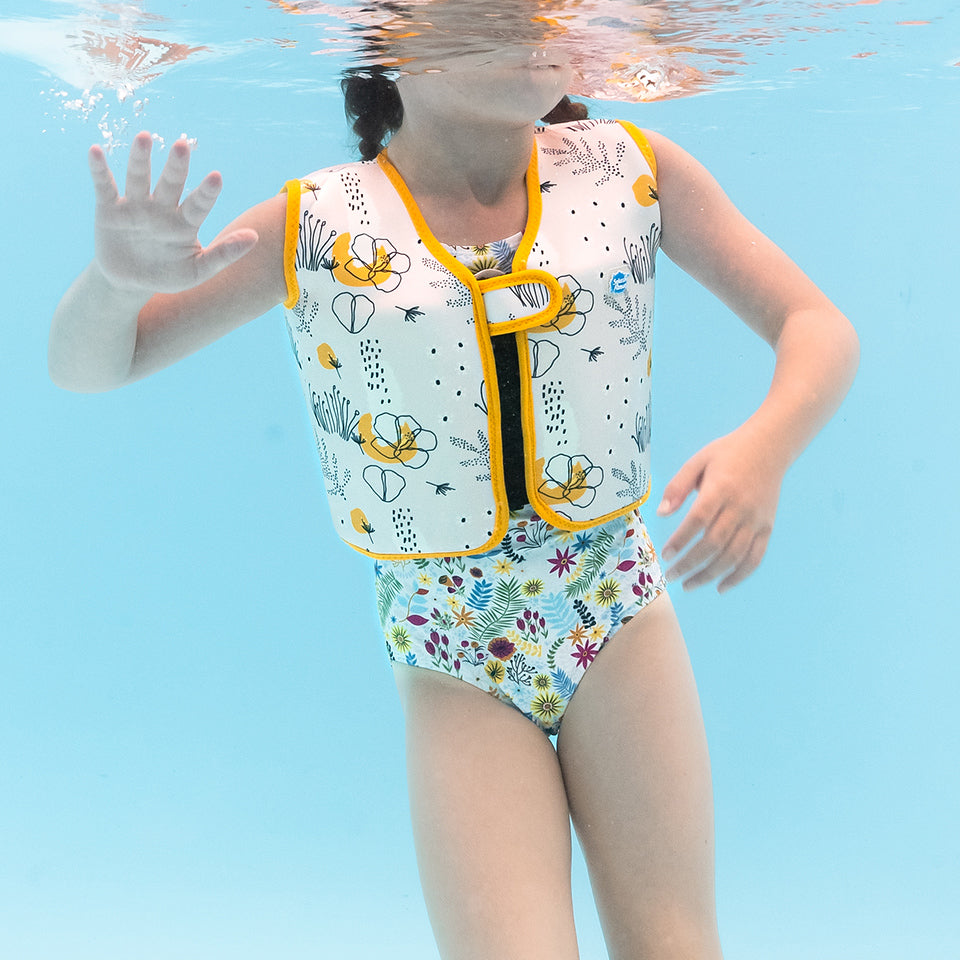Go Splash Float Jacket
Frequently Asked Questions
This is something you need to safely test with your child. They should be able to hold their heads above the water while submerging their bodies. You may find that you need only a quarter or half of the floats, and that’s fine; everyone is different
Salt, sun, and chlorine can all degrade fabrics, regardless of their robustness. It is important to simply rinse thoroughly in cold water and then leave to dry out of direct sunlight.
Any of our toddler swimwear without buoyancy aids, such as the Warm in One or our Happy Nappy™ Sunsuit, can be worn.
The Float Jacket features built-in pockets with removable floats positioned around the torso. As your child gains confidence in the water, you can gradually reduce the buoyancy by removing the floats. Always remove one float from a front pocket and the corresponding float from the opposite back pocket to maintain balance. After each adjustment, allow your child to practice in the water to ensure they still feel supported and comfortable. Continue this process, removing floats in pairs until your child is swimming independently without assistance.
Yes, a Float Jacket can help your child learn to swim. It provides buoyancy that supports a natural swimming position, allowing your child to focus on developing their swimming skills rather than struggling to stay afloat. The gradual removal of floats as they gain confidence allows for a smooth transition to independent swimming. Additionally, the design encourages proper arm movement and body positioning, which are essential for effective swimming.
It is important for the Float Jacket to fit properly to ensure safe use and comfort. The jacket should have a snug fit, sitting close to the body without being too tight. It should not ride up when your child is in the water. Additionally, your child should be able to move their arms freely and comfortably while wearing the jacket, allowing them to practice swimming strokes effectively.
Float jackets are suitable for children aged two and over. Children have better
muscle control and coordination by this age, allowing them to maintain balance and manage their movements in the water more effectively. Younger children and babies may not have the neck strength needed to keep their heads above water.



